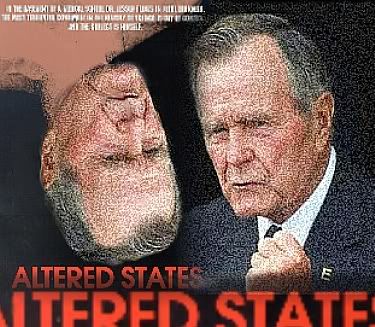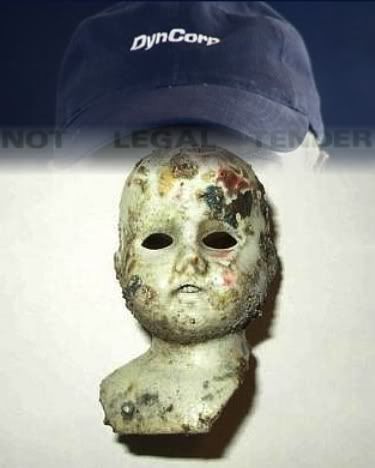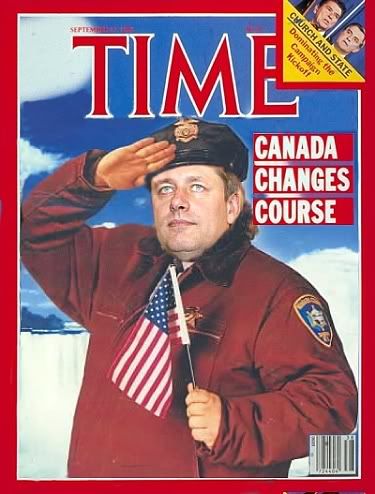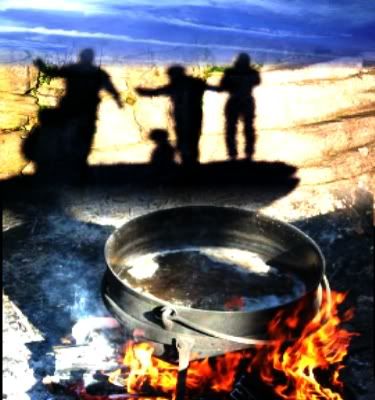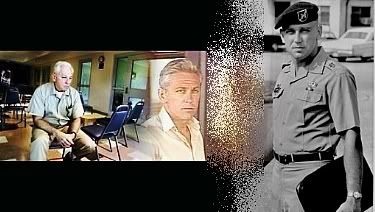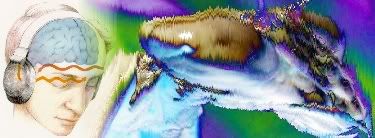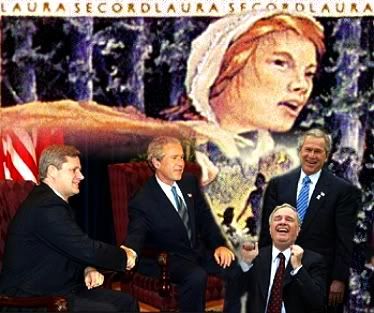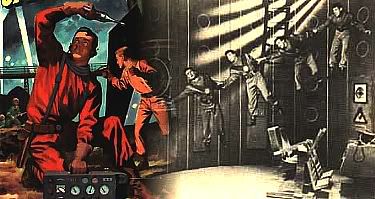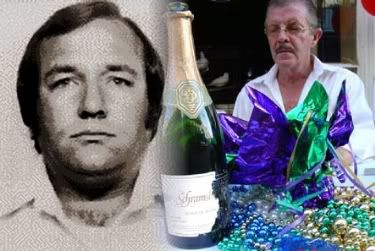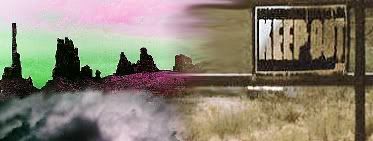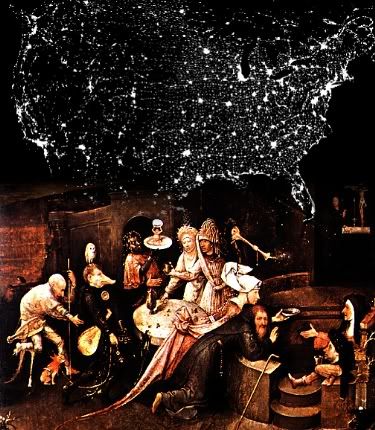"No man sees my face and lives"
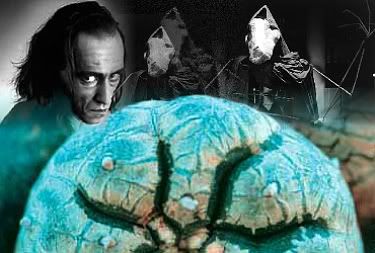
I and I
One says to the other, no man sees my face and lives. - Bob Dylan
Antonin Artaud traveled to Mexico in 1936 in order to become Europe's first "shamanic tourist" among the Tarahumara Indians. "Peyote, I knew, was not made for whites," the surrealist wrote in The Peyote Dance. "And a White, for these Red Men, is one whom the spirits have abandoned."
The Tarahumara tried to fob off on Artaud "old men who would suddenly get the bends and jiggle their amulets in a queer way," but he held out for the genuine shamans. Finally he was permitted to join an all-night peyote ceremony, and partook of the "dangerous dissociations it seems Peyote provokes, and which I had for 20 years sought by other means":
The things that emerged from my spleen or my liver were shaped like the letters of a very ancient and mysterious alphabet chewed by an enormous mouth, but terrifying, obscure, proud, illegible, jealous of its invisibility.... Peyote leads the self back to its true sources.
To which Daniel Pinchbeck comments in Breaking Open the Head: "as powerful as they were these revelations could not cure his inner divisions":
They could not heal him. Artaud spent the last twelve years of his life in mental institutions, treated by electroshock, writing paranoid letters and increasingly incoherent rants, and revising the text of his revelations among the Tarahumara.
Naturally. The inner divisions were heightened. Artaud wasn't seeking wholeness and reintegration; he was seeking transcendence. Dissociation appears to be a chief characteristic of such a venture, and of intentional boundry crossings. (I say intentional because we need to account for the many witnesses and victims to boundary crossings of which they wanted no part.)
A book by Bruce Moen entitled Voyages into the Unknown records his training in astral projection at the Monroe Institute. A Wednesday night during one of Moen's residencies Robert Monroe led a discussion on what he called the "I/There." Monroe taught that the self as we know it is merely the fragment of the "Total Self" which is currently living a physical life. The total self is a cluster of many beings who each live many lifetimes. So, to astral travellers, many of their "guides" must actually be astral aspects of their total self.
This packet of information overwhelmed Moen:
I ran out into the cool evening air and headed for an open grassy field. Something inside me was being overwhelmed. The old me was dissolving into thin air and a new unfamiliar me was taking its place. I pulled off my shirt and began rolling around in the grass, trying to get a grip on myself. I wasn't sure why I felt the need to do so, but rolling on the ground seemed quite reasonable at the time. The feeling of agitation and internal chaos flying around inside me were overpowering. It felt like rushing waves of some new reality crashing into sea walls of long held beliefs. Some parts of the walls were being pulverized into little bits and washed out to sea.
While rolling shirtless on the grass Moen was ignored by others strolling along the grounds, perhaps because they'd seen it all before. In 1984 an INSCOM lieutenant named Doug Pemberton enrolled in the same Gateway course Moen was attending. According to Schnabel's Remote Viewers, after three days and 15-minutes into another hemi-sync session, Pemberton was found wandering naked and babbling incoherently, and taken to a Walter Reed psychiatric ward.
After Moen pulled himself together he returned to his Monroe Center "CHEC" unit (Controlled Holistic Environmental Chamber) for that evening's tape session: "I stood for a moment at the opening to the CHEC unit, feeling how much it seemed like a Gateway into another dimension. Something in me was struggling to hang on to its old identity.... That part of me was trying to prevent my passing through that Gateway and entering whatever dimension of the beyond awaited."
Reading this and Monroe's theory of a fragmentary self, I'm reminded of "body Thetans" from the higher teachings of Scientology, and of the over-representation of high Scientologists among the military's remote viewers. (For instance, the NSA's Major Hal Puthoff was an "Operating Thetan, Level III," Pat Price OT IV, and Ingo Swann OT VII.) And after reading Moen's book, this is familar, too: "Tom Cruise became psychotic during a secret Scientology initiation in which one is told that rather than being one person, one is composed of thousands of aliens from all over the universe fighting for control of your body. After completing this initiation, known as OT III, Tom appeared sickly with black circles under his eyes and pasty skin."
L Ron Hubbard leads us back to Aleister Crowley. In Crowleyan occult science, ego death is called the "crossing of the abyss," and entails for the magician a wrestling with the "great demon" Choronzon, the dweller of the abyss, found in the 10th Aethyr of John Dee's Enochian system. (An excerpt from Alex Owen's The Place of Enchantment recounts Crowley's 1909 crossing with the aid of companion Victor Neuburg: "Both men now felt that they understood the nature of the Abyss. It represented Dispersion: a terrifying chaos in which there was no center and no controlling consciousness.")
I believe all this talk - and against a deep, black backdrop of military study and sponsorship - of a fragmentary cluster of selves, "body thetans" and ego death, has considerable resonance for the study of ritual abuse and mind control, which is also concerned with the deliberate destruction of ego integration, though naturally not by choice. In the ritual context of ego death and its regard as a prerequisite for transcendence, the creation of programmable alters may be regarded as a high sacrament.
Moen begins Voyages into the Unknown curiously with pages of detail concerning a bizarre early childhood "daydream." In it, he enters a bedroom, and a woman on the bed raises the covers and beckons him to join her. Moen writes, "as a five- or six-year old boy, I never understood what we did in that bed. I only felt the frolicking atmosphere, pleasure, and a lot of bouncing and moving." Then he feels terror at the image of a menacing figure in the doorway. ("I knew in that instant if he got his hands on me I would be dead or worse.")
Later in life I began to wonder, so where had this daydream come from? How could I as a young boy have any knowledge of brass rail beds, sex, or another man's jealousy that was strong enough that he wanted to kill me? And the feelings that accompanied the experience - where had they come from? The pleasure, joy and frolic I'd felt with the woman. The throat-gripping terror I'd felt with the knowledge I'd be killed or worse if the man in the doorway caught me. Where did those feelings come from?
By my early twenties, it was clear to me that I had no reasonable, logical explanation for how a five- or six-year old boy could have such a daydream.... After many years I came to accept the only possible answer, reincarnation.
Even though I'd known, when I first picked up Moen's book, that he would be going there, to me this "only possible answer" immediately cast doubt upon his self-knowledge, even though he now believes, following Monroe, that the self is illusion. Because if it ever occured to him that the peculiar "daydream" could be memories from this life - suppressed images of traumatic childhood abuse - he doesn't say.
By the way, here's an oddly-worded wire story about a security breach inside an Arkansas chemical weapons plant. "There's no doubt in my mind that the officer saw something, but it wasn't human," Col. Brian S. Lindamood said. "At this time I have no idea what it could be." RI board discussion here.
